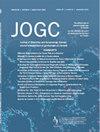Uresta膀胱支架的自我选择验证研究。
IF 2.2
Q2 OBSTETRICS & GYNECOLOGY
引用次数: 0
摘要
介绍和假设:虽然有效性和安全性的证据是使用医疗器械的消费者和医疗保健专业人员最关心的问题,但当设备是非处方药时,消费者独立于医疗保健专业人员的指导正确自我选择使用设备的能力同样必不可少和重要。到目前为止,还没有正式的检查过程的自我选择的Uresta膀胱支持或任何其他尿失禁必备。本研究旨在评估Uresta膀胱支持系统的自我选择过程。结果:49名妇女参加了这项研究。尿失禁诊断如下:尿失禁16例(33%),单纯压力性尿失禁18例(37%),混合性尿失禁13例(27%),单纯急迫性尿失禁2例(4%)。36人(73%)表示他们会获得膀胱支持并使用它,而13人(27%)表示他们不会根据对设备的了解和个人病史选择使用该设备。43人(88%)做出了正确的自我选择决策,6人(12%)做出了错误的决策。根本原因分析发现,在非处方环境下使用Uresta膀胱支持相关的残留风险是可以接受的,并且被设备对用户生活质量的影响所抵消。结论:根据Uresta膀胱支撑器外包装上提供的信息,大多数用户会对使用该产品做出正确的自我选择,以控制其尿失禁症状。本文章由计算机程序翻译,如有差异,请以英文原文为准。
A Self-Selection Validation Study of the Uresta Bladder Support
Objectives
When a medical device is available over the counter, the ability of a consumer to correctly self-select to use the device, independent of guidance from a health care professional, is essential and important.
This study was undertaken to evaluate the self-selection process for the Uresta Bladder Support.
Methods
A total of 49 women were enrolled in this study. The results of a self-selection interview were validated by using a gynaecologic examination as the gold standard.Results: The urinary continence diagnoses broke down as follows: continent 16 (33%), pure stress incontinence 18 (37%), mixed urinary incontinence 13 (27%), and pure urge incontinence 2 (4%). A total of 36 (73%) indicated that they would acquire the bladder support and use it, whereas 13 (27%) indicated that they would not choose to use the device based on their understanding of the device and their personal medical history. A total of 43 (88%) made a correct self-selection decision and 6 (12%) made an incorrect decision. Root cause analysis found that the residual risks associated with use of the Uresta Bladder Support in the over-the-counter context were acceptable and outweighed by the impact of the device on user’s quality of life.
Conclusions
Using the information provided on the external packaging of the Uresta Bladder Support, most users will make a correct self-selection decision regarding the use of the product to manage their incontinence symptoms.
求助全文
通过发布文献求助,成功后即可免费获取论文全文。
去求助
来源期刊

Journal of obstetrics and gynaecology Canada
OBSTETRICS & GYNECOLOGY-
CiteScore
3.30
自引率
5.60%
发文量
302
审稿时长
32 days
期刊介绍:
Journal of Obstetrics and Gynaecology Canada (JOGC) is Canada"s peer-reviewed journal of obstetrics, gynaecology, and women"s health. Each monthly issue contains original research articles, reviews, case reports, commentaries, and editorials on all aspects of reproductive health. JOGC is the original publication source of evidence-based clinical guidelines, committee opinions, and policy statements that derive from standing or ad hoc committees of the Society of Obstetricians and Gynaecologists of Canada. JOGC is included in the National Library of Medicine"s MEDLINE database, and abstracts from JOGC are accessible on PubMed.
 求助内容:
求助内容: 应助结果提醒方式:
应助结果提醒方式:


